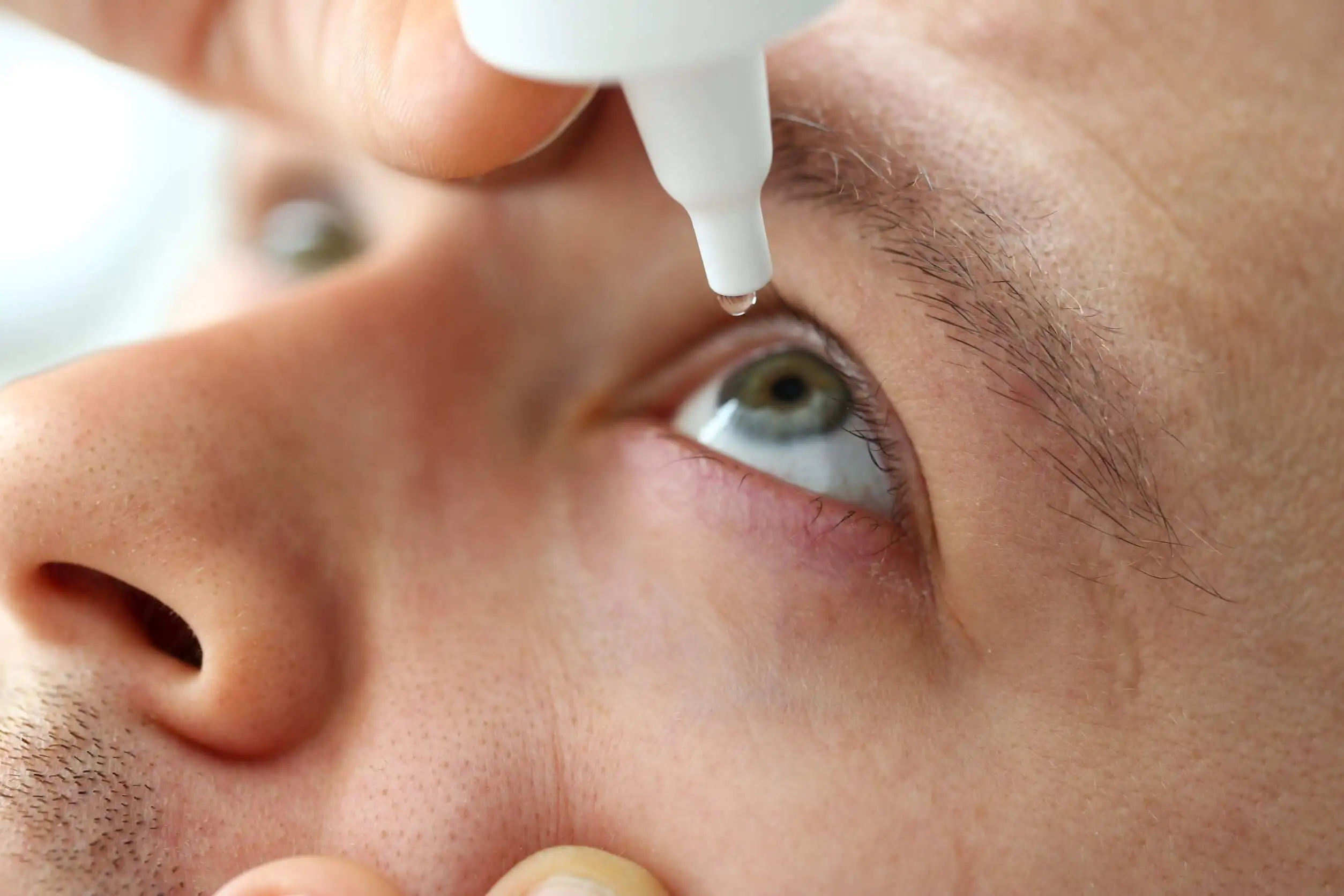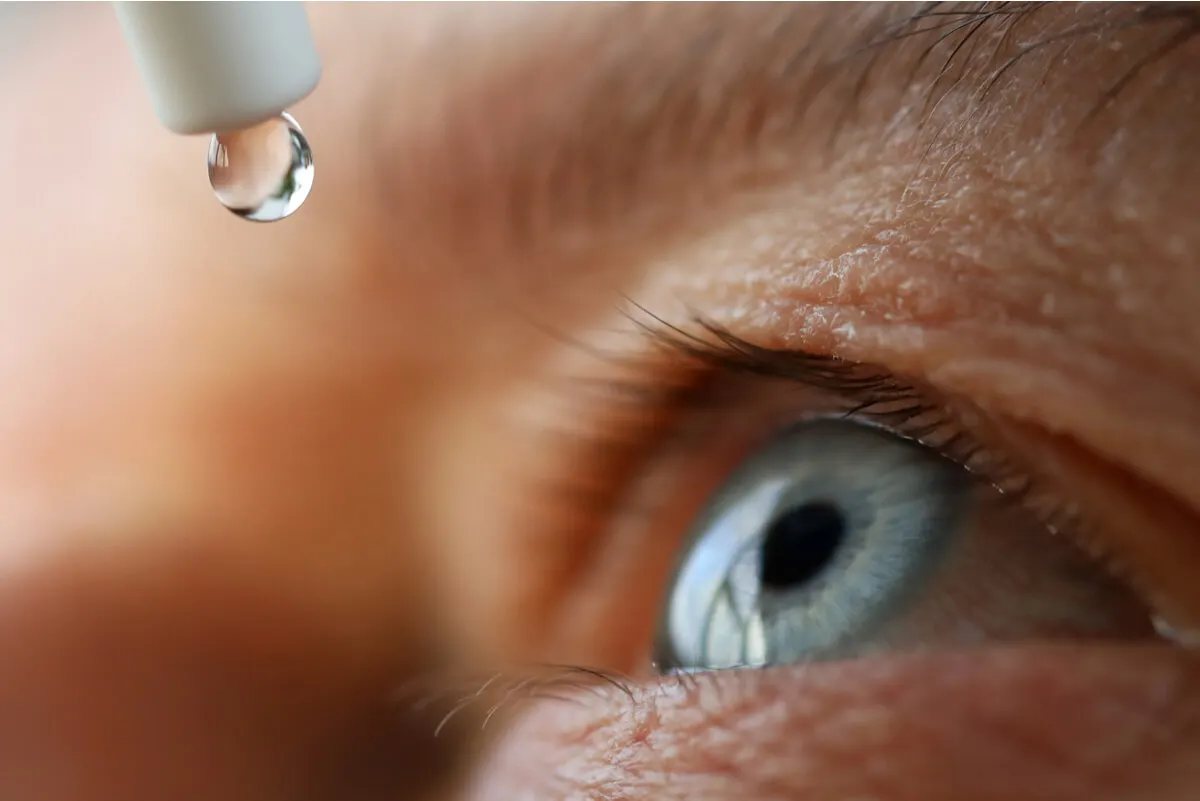Artificial Tears for Dry Eyes: How Are They Used?


Reviewed and approved by the nurse Leidy Mora Molina
Artificial tears are a product intended to fulfill a function similar to that of natural tears. In particular, they maintain adequate moisture and hydration of the eyes. For this reason, they’re frequently used in the case of conditions that cause dry eyes.
Their application reduces inflammation or irritation generated by the lack of lubrication. In addition, they also protect against other associated complications. So, how can they be used correctly? Here are the details.
Dry eyes and their possible causes
Dry eyes are a common problem that generates annoying symptoms such as itching or burning. Sometimes this is a temporary condition – for example, when spending a lot of time in front of the computer or in an air-conditioned room.
However, there are times when this symptom becomes chronic, such as when it results from the following conditions:
- Aging
- Autoimmune diseases
- Hormonal changes
- Allergic eye diseases
- Inflammation of the sebaceous glands of the eyelid
Either way, dry eyes cause various forms of discomfort. This condition can even cause the vision to become blurred or eye fatigue to set in. The most practical solution for this condition is artificial tears.

What are artificial tears?
Artificial tears are drops that lubricate dry eyes and help maintain moisture on the external surface of these organs. They’re used to combat dryness and are the mainstay treatment for those suffering from dry eye syndrome.
Their function is to mimic the constitution of real tears. However, their composition may vary depending on the brand. To be more precise, they contain one or more of the following elements:
- Ocular lubricants: All brands contain them. Their function is to heal the surface of the eye when there’s damage.
- Guar gum: This is often present in the oilier drops and is helpful for those who have severe dry eye problems.
- Preservatives: They prevent bacteria from growing inside the liquid.
Artificial tears can be obtained over the counter without a prescription. People should almost always try several brands before finding the one that is best for them. It’s also common to use an ointment or gel for more severe conditions.
We think you may also enjoy reading this article: What Colors Look Good on You According to Your Skin, Hair, and Eyes
How to choose the right artificial tears
As we’ve already indicated, this product is usually the first treatment option in cases of dry eyes. However, it’s important to note that the key is to get personalized treatment, especially if the problem is chronic or very pronounced.
That said, the best option is to use formulas without phosphates and without preservatives. Likewise, it’s recommended that they have a low osmolarity, i.e., a low concentration of dissolved substances. This compensates for the excess of salts – or hyperosmolarity – that is always present in dry eyes.
It should also be noted that these have different degrees of viscosity. The more fluid ones have a short-lasting effect. The thicker ones have a longer-lasting effect but are more uncomfortable, as they produce blurred vision. For this reason, they are usually used only at night, before going to bed.
Are they safe?
In general, artificial tears are safe. Only some caution should be exercised with drops that have preservatives. These often come in multi-dose bottles. Preservatives prevent bacteria from growing in the medication, but they irritate some people’s eyes.
Preservative-free drops come in single-dose packaging, which means they’re used and thrown away. They’re usually more expensive, but they’re also safer for those who must use them more than four times a day.
However, both types can cause blurred vision or generate an allergic reaction. If you notice any discomfort after using the drops, such as burning, itching, or inflammation, discontinue use. If there’s also dizziness, nausea, or difficulty breathing, seek medical help immediately.
The use of artificial tears for dry eyes
Artificial tears with preservatives shouldn’t be applied more than four times a day. If they don’t contain preservatives, however, it’s possible to use them up to eight times. In any case, it’s best to consult your doctor and follow his or her instructions.
Before applying the drops, it’s necessary to wash your hands well. Then, remove your contact lenses – if used – and shake the bottle. Then, follow the next steps:
- Tilt your head back slightly, looking up.
- Hold the bottle of drops with your thumb, index, and middle fingers, without touching the tip of the bottle or the rim of the bottle.
- Close your eyes.
- Place a drop in the corner of the eye near the nose and without touching the eyelid.
- Open the eyes and blink several times until the drop moves inside the eye.
- Apply to the other eye.
- Close the product tightly, put it away and wash your hands again.

Like this article? You may also like to read: Dark Circles Under The Eyes in Children: A Reason For Worry?
Final recommendations
Contact lenses cause dry eyes. In such cases, it’s best to ask your doctor to recommend the most suitable type of artificial tears. Those with 0.15% hyaluronic acid and no preservatives are almost always recommended.
Red-eye drops, or decongestants, often worsen dry eye symptoms. Therefore, they’re not recommended. If the use of artificial tears isn’t effective, it’s important to discuss this with your ophthalmologist to find other treatment options.
All cited sources were thoroughly reviewed by our team to ensure their quality, reliability, currency, and validity. The bibliography of this article was considered reliable and of academic or scientific accuracy.
- Pucker AD, Ng SM, Nichols JJ. Over the counter (OTC) artificial tear drops for dry eye syndrome. Cochrane Database Syst Rev. 2016 Feb 23;2(2):CD009729. doi: 10.1002/14651858.CD009729.pub2. PMID: 26905373; PMCID: PMC5045033.
- Kathuria A, Shamloo K, Jhanji V, Sharma A. Categorization of Marketed Artificial Tear Formulations Based on Their Ingredients: A Rational Approach for Their Use. J Clin Med. 2021 Mar 21;10(6):1289. doi: 10.3390/jcm10061289. PMID: 33800965; PMCID: PMC8003881.
- Colomer, M. E. B., Pérez, M. A., & Chamón, H. R. A. (2011). El síndrome del ojo seco: el uso de lágrimas artificiales. Butlletí d’Informació Terapéutica, 22, 3.
This text is provided for informational purposes only and does not replace consultation with a professional. If in doubt, consult your specialist.








